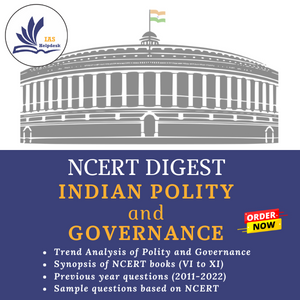What is a no confidence motion?
Description
Description: Learn about the concept of a no-confidence motion in Indian politics. Discover its purpose, process, and historical significance in parliamentary democracy. Recent examples and insights shared.
What is a no-confidence motion?
Lok Sabha
Speaker Om Birla accepted a no-confidence motion moved by the Opposition
against the government on July 26. The motion was brought amidst the
Opposition’s ongoing protests demanding a statement on the situation in Manipur
from Prime Minister Narendra Modi.
What is a no-confidence motion?
In a
parliamentary democracy, a government can be in power only if it commands a
majority in the directly elected House. Article 75(3) of our Constitution
embodies this rule by specifying that the Council of Ministers is collectively
responsible to the Lok Sabha.
For testing this
collective responsibility, the rules of Lok Sabha provide a particular
mechanism – a motion of no confidence.
Who can move a no-confidence motion?
The motion can
be moved only in the Lok Sabha. It cannot be moved in the Rajya Sabha. Any
member of the Lok Sabha can move a no-confidence motion. But the motion has to
be supported by at least 50 members of the House.
How is a no-confidence motion moved?
A no-confidence
motion must be signed by the member moving it and submitted to the Speaker of
the Lok Sabha. The Speaker of the Lok Sabha then decides whether to admit the
motion for discussion. If admitted, the Speaker decides on the date and time
for the discussion, often in consultation with all the parties.
How is a no-confidence motion debated and
voted?
The motion is
moved by the member who submitted it, and the government will then respond to
the motion. The opposition parties will then have the opportunity to speak on
the motion. After the debate, the Lok Sabha will vote on the no-confidence
motion. The motion will be passed if it is supported by a majority of the
members of the House. If a no-confidence motion is passed, the government must
resign.
Why used?
However, the no-confidence motion has historically been used as a strategic tool to force a
discussion on a certain topic or issue. The Opposition knows that it does not
have the numbers but still has moved the motion to force the government to
address their concerns about the situation in Manipur.
How many no-confidence motions have been
moved in the past?
It was during
the third Lok Sabha in 1963 that the first motion of no confidence was moved by
Acharya J B Kripalani against the government headed by Prime Minister
Jawaharlal Nehru. The debate on the motion lasted for 21 hours over four days,
with 40 MPs participating.
In his reply,
Nehru remarked, “A no-confidence motion aims at or should aim at removing the
party in government and taking its place. It is clear in the present instance
that there was no such expectation or hope. And so the debate, although it was
interesting in many ways and, I think profitable too, was a little unreal.
Personally, I have welcomed this motion and this debate. I have felt that it
would be a good thing if we were to have periodical tests of this kind.”
Since then,
there have been 26 more no-confidence motions moved in the parliament (not
counting the latest one), with the last one being in 2018, moved by the TRS
against the previous Narendra Modi government.

